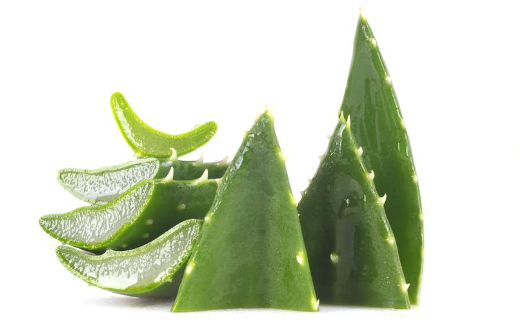
Aloe vera has anti-cancer, anti-inflammatory, anti-virus, antibacterial and insecticidal, antipyretic, liver-protecting, and immune-enhancing effects, and is widely used in various fields such as pharmaceutical industry, daily chemical industry, beauty and cosmetics, and food health care. Therefore, aloe vera is a kind of Medicinal plants of economic value. Anthraquinones and aloe polysaccharides are the main active ingredients in aloe vera, which have anti-inflammatory, anti-virus, diarrhea, anti-cancer, anti-aging, skin care and beauty effects.
At fruit post-harvest preservation:
Fruits have high nutritional value and edible value, and also have health care and anti-cancer and anti-aging effects. In addition, some fruits also have comprehensive functions such as lowering blood pressure, slowing down aging, losing weight, skin maintenance, improving eyesight and anti-cancer, lowering cholesterol, and supplementing vitamins. The general storage period of fruit at room temperature is 2-3 days. After harvest, it is very easy to lose water, shrink and rot, or become diseased due to external influences, accompanied by the loss of a large amount of nutrients, resulting in a decline in fruit quality, thereby affecting the fruit sales market.
Therefore, finding a simple and practical fresh-keeping method is an important part of post-harvest fruit fresh-keeping. At present, although there have been many researches on post-harvest fresh-keeping technologies of fruits, and some achievements have been made, some of those fresh-keeping technologies have high equipment costs, some are cumbersome to operate, and some have other side effects, which are not conducive to the promotion of use. Therefore, seeking the most simple and effective method to maintain the quality and color of fruits is an important purpose of the current fruit post-harvest preservation research.
In this study, the fresh-keeping method of spraying plant extracts was used, and four kinds of fruits, namely strawberry, apple, cherry tomato and winter jujube were selected as test materials. , 0.25%, 0.1%, 0.05%. Among them, the change trend of the 0.05% treatment group was more significant than that of other treatment groups and CK group. In the 0.05% treatment group, the weight loss rate, rot rate and firmness decline rate of the four fruits were alleviated. Other indicators take strawberry as an example. In the 0.05% treatment group, the soluble solid content is 5.9%, the vitamin C content is 4.5mg/100g, and the clearance rate of secondary metabolites and DPPH is about 10% higher than that of the CK group. . Among them, the titratable acid content was 0.8%, and the change trend was more gentle than that of the CK group. Therefore, for these four kinds of fruits, the optimal concentration of spraying aloe vera extract to keep fresh is 0.05%. The fresh-keeping effect of aloe vera extract may be insufficient compared with other fresh-keeping methods, but compared with other methods, it is simpler to operate, has fewer side effects, and is more convenient for popularization and utilization. In addition, it can also be combined with other fresh-keeping methods for composite fresh-keeping research.
At Food Antioxidant:
The natural aloe extract was added to kiwi fruit juice, and the influence of factors such as ultraviolet light, temperature, CuCl2 and air on the peroxide value of kiwi fruit juice was investigated. The experimental results showed that when the ultraviolet light was irradiated at room temperature for 7 hours, the kiwi fruit juice added with aloe extract, Its peroxide value is 11.12% lower than that of non-plus; when heated at 100°C for 7 hours, the peroxide value of kiwi fruit juice added with aloe extract is 7.24% lower than that of non-plus; oxidized with 0.1mol/L CuCl2 solution and air for 7 hours When adding aloe extract, the peroxide value of kiwi fruit juice was 23.01% and 7.74% lower than that without adding 20ml of aloe extract, and the hydroxyl radical scavenging capacity of the juice was 6.19 times higher than that without adding 20ml of aloe extract.
At Cosmetic:
Through the antioxidant experiment of vanishing cream solution, the protective effect of aloe vera leaf extract on vanishing cream was studied, and the effects of aloe vera extract on the peroxide value and hydroxyl radical removal ability of vanishing cream under the action of temperature, hydrogen peroxide and ultraviolet light were investigated. After 8 mL of aloe vera extract: incubated at 25℃ for 5 h, the peroxide value of vanishing cream was 20.15% lower than that without addition; 4 mL of 1% H2O2 aqueous solution was oxidized for 5 h, and the peroxide value was lower than that without addition. 16.63%; when irradiated with ultraviolet light for 5 h, the peroxide value was 12.44% lower than that without addition; the hydroxyl radical scavenging rate of vanishing cream was 6.43 times that without addition.
Ref: Antioxidant properties of aloe vera ethanol extracts in cream cosmetics; Yuzhu Ouyang, Youji Li, Ping Zhang, Shilan Luo; TQ658.2 (Perfume and Cosmetics Industry)
Ref:: Effect of adding aloe extract on antioxidant activity of kiwi fruit juice; Yuzhu Ouyang, Youji Li, Ping Zhang, Shilan Luo; TS201.2 (Food Industry)